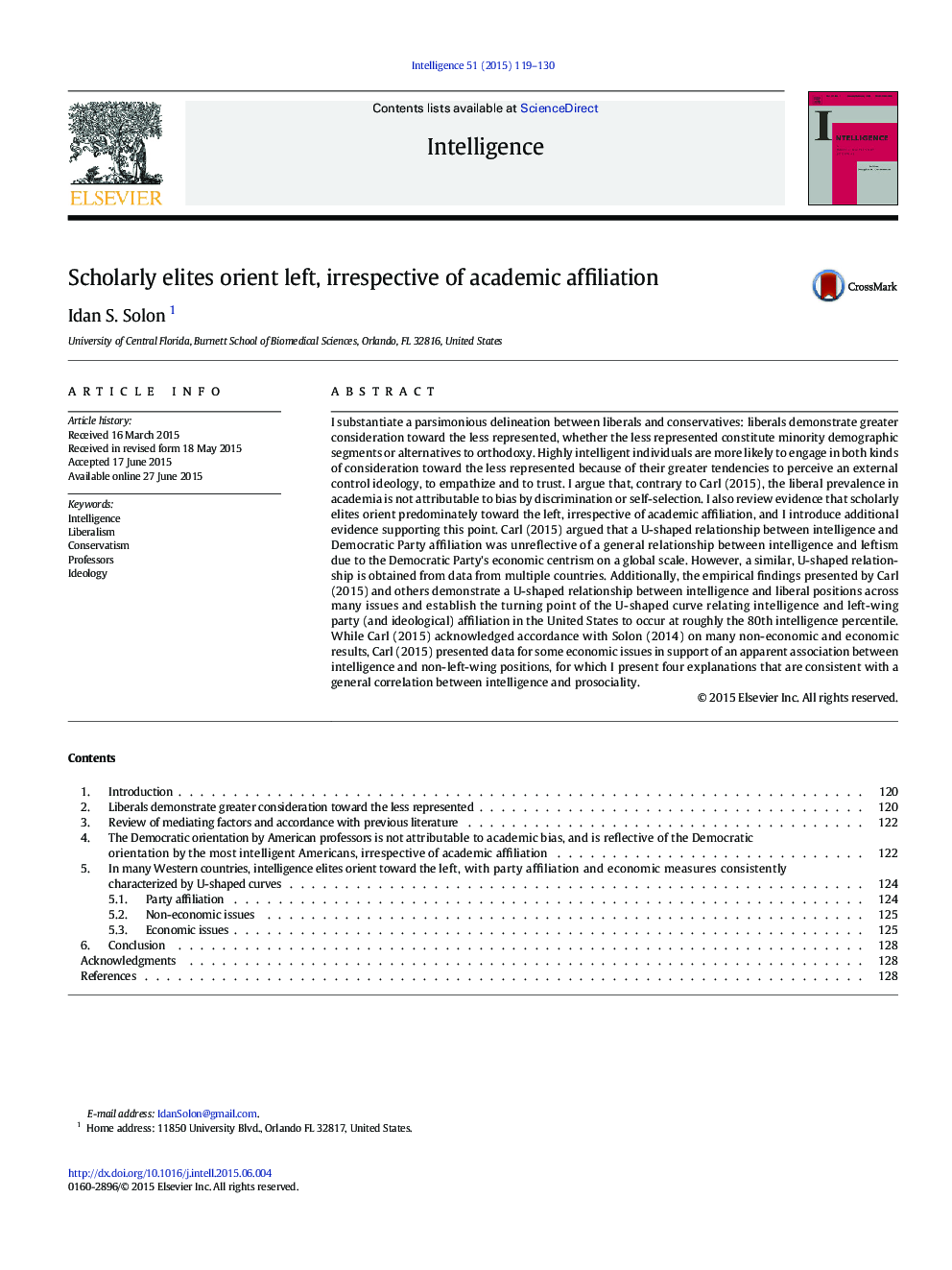| Article ID | Journal | Published Year | Pages | File Type |
|---|---|---|---|---|
| 7293801 | Intelligence | 2015 | 12 Pages |
Abstract
I substantiate a parsimonious delineation between liberals and conservatives: liberals demonstrate greater consideration toward the less represented, whether the less represented constitute minority demographic segments or alternatives to orthodoxy. Highly intelligent individuals are more likely to engage in both kinds of consideration toward the less represented because of their greater tendencies to perceive an external control ideology, to empathize and to trust. I argue that, contrary to Carl (2015), the liberal prevalence in academia is not attributable to bias by discrimination or self-selection. I also review evidence that scholarly elites orient predominately toward the left, irrespective of academic affiliation, and I introduce additional evidence supporting this point. Carl (2015) argued that a U-shaped relationship between intelligence and Democratic Party affiliation was unreflective of a general relationship between intelligence and leftism due to the Democratic Party's economic centrism on a global scale. However, a similar, U-shaped relationship is obtained from data from multiple countries. Additionally, the empirical findings presented by Carl (2015) and others demonstrate a U-shaped relationship between intelligence and liberal positions across many issues and establish the turning point of the U-shaped curve relating intelligence and left-wing party (and ideological) affiliation in the United States to occur at roughly the 80th intelligence percentile. While Carl (2015) acknowledged accordance with Solon (2014) on many non-economic and economic results, Carl (2015) presented data for some economic issues in support of an apparent association between intelligence and non-left-wing positions, for which I present four explanations that are consistent with a general correlation between intelligence and prosociality.
Related Topics
Social Sciences and Humanities
Psychology
Experimental and Cognitive Psychology
Authors
Idan S. Solon,
